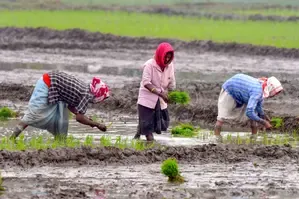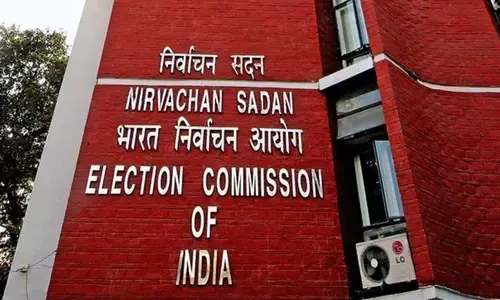How is Rainfall Enhancing Kuruvai Paddy Cultivation in TN Delta Districts?

Synopsis
Key Takeaways
- Widespread rainfall has positively influenced kuruvai paddy cultivation.
- Farmers report a 56% increase in cultivated area compared to last year.
- Timely rain during Aadi month is crucial for harvest success.
- Operational costs are rising due to challenges in harvesting.
- Experts recommend proper sowing practices for the samba crop.
Chennai, Aug 17 (NationPress) Except for certain regions where early kuruvai paddy is nearly harvested, the extensive rainfall over the previous two weeks has given a substantial boost to kuruvai cultivation throughout the Cauvery delta districts.
Farmers claim these rains have established favorable conditions for the forthcoming samba season.
As reported by the Agriculture and Farmers’ Welfare Department, this year, short-term kuruvai paddy has been cultivated across 2.33 lakh hectares in Thanjavur, Tiruvarur, Nagapattinam, Mayiladuthurai, and Tiruchy. This represents a remarkable 56 percent increase from the previous year.
With comfortable storage levels in the Mettur dam, coupled with the recent showers, the standing kuruvai crops have received a vital boost.
Farmers highlight that the rainfall during the traditional Tamil month of Aadi has been timely. “This will help ensure a bountiful harvest during the current kuruvai season,” remarked Kumaran Balaji, a farmer from Thanjavore.
Another farmer, R. Sukumaran of Kakkarai, described the rains as “essential” for sustaining the crop. However, for those harvesting early varieties, the increased moisture has caused challenges.
“Due to the damp fields, machinery had to be operated for an additional three hours to finish the harvest, leading to higher costs,” stated P. Vadivelu of Ammayagaram.
Meanwhile, several farmers who opted out of kuruvai cultivation in favor of samba are utilizing both rainwater and canal water for transplantation.
Official estimates indicate that samba paddy will cover 1.23 lakh hectares in Thanjavur, 1.38 lakh hectares in Tiruvarur, and 70,000 hectares in Mayiladuthurai.
Experts recommend that farmers adopt cautious sowing practices to shield the samba crop from potential damage during the northeast monsoon.
“Long-term varieties should be planted between August 15 and September 7, while medium-term varieties can be sown throughout September. This strategy will help protect crops from heavy rainfall later in the year,” advised P. Kalaivanan of the Senior Agro Technologists Forum.
With consistent rainfall, sufficient dam storage, and timely advice, farmers in the delta are hopeful about both kuruvai and samba yields this year, though rising operational costs remain an issue.









